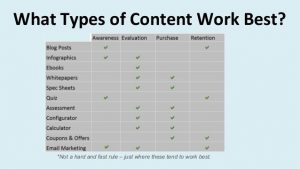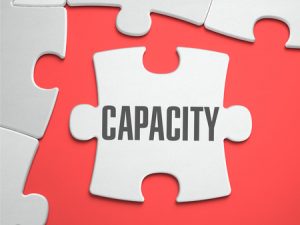
Alexas_Fotos / Pixabay
Picture this: Every day, your agents come to work to find interactions that totally match their skills. They’re empowered to answer customer questions. And they’re the experts on the needs of your customers. Every person who reaches out gets directed to the agent who knows how to best answer their inquiry in a reasonable time frame. And, your contact center has the right number of agents working each shift to keep service levels in the green.
Obviously, that would be ideal. If you’re in the midst of the call center craziness and your hair is graying as a result, this picturesque level of workforce management likely feels like a dream. Often, just getting agents to stay in their seats and show up on time is a struggle.
But, let me tell you, if this dream becomes reality, you’ll have
- Happier customers
- Agents who are less stressed and overwhelmed
- And, more time to focus on professional development of your employees.
How on earth do you reach this level of nirvana?
When Workforce Management Meets Employee Engagement
Daily, you juggle agents’ schedules and KPIs — constantly working for greater efficiency in your contact center. And you take to your workforce management tasks to optimize time and resources. But how can you stay efficient when your agents are stressed, disengaged, and turnover rates are high?
Take a breath. You don’t have to dramatically change every aspect of how you manage your team to see better results from your agents. In fact, you can use workforce management to drive better engagement and positive business results across the board.
According to Gartner, workforce management that focuses on engaging employees is the future for successful call centers. Gartner notes that companies need to assess the potential needs, expectations and aspirations of the next generation of employees in their contact centers. It’s essential to shift your mindset from workforce management for greater optimization to instead workforce management for the sake of greater employee engagement.
Hold up, what does workforce management have to do with employee engagement? Let’s dive into a few ways workforce management can work in tandem with engagement in your contact center, so you can show off to your executive team.
Two Ways to use Workforce Management for Employee Engagement
1. Engaging Agent Skills
There’s a reason that HR specialists describe hiring as “looking for talent.” When you hire new employees, you’re looking for the greatest talent. You’re not hiring just anyone who walks in the door. You have a set of skills you’re searching for: someone who is a problem solver, empathetic, organized, etc.
So, how come contact centers struggle with talent retention? With a turnover rate of 35-45%, contact centers aren’t the best at keeping their employees in their seats. The issue begins with a new employees’ first day. You’ve hired them because they’ve fulfilled a checklist of skills. But, how are those skills being fostered and used as soon as they start their new job.
According to Gallup, one of the main drivers of employee engagement is providing a pathway for professional development. Your employees want to know how you’re going to help them grow their future. How are their skills going to be promoted so they can develop their career path?
Part of workforce engagement management involves making the best use of your agents’ skills. Document your agents’ greatest strengths (and areas for improvement) and build out internal squads that specialize in solving specific problems.
For example, you’ve got three agents who are incredibly detail-oriented — Jennifer, Mark and Dylan. They’re especially gifted at troubleshooting data errors and enjoy working through spreadsheets. But, they aren’t as interested in big picture customer strategy. They make up one squad on your call center team. This squad invests time in learning the ins and outs of your customer reports.
Using skills-based routing and your IVR, you can use that squad’s strengths by sending data-specific customer inquiries directly to them. When a customer has a question about something that requires a deep-dive into data, your reporting squad helps them problem-solve. And, the same squad can help cross-train and onboard other agents interested in learning more about data management and reporting tools, too.
You can do the same with team members quick to learn complex product or service functions. Or, perhaps have a squad that focuses on finance and billing questions for your customers. Managing your workforce to optimize their particular interests and strengths structures your team for greater success.
How Your Agents Benefit:
Workforce management around agent strengths allows agents to spend less time on the tasks they dread. You’re engaging their interests and showing you value what they bring to the table. Consider how much more your employees will enjoy coming to work when they’re experts empowered to answer customer problems.
How Your Customers Benefit:
When you structure your team around their skills and interests, your customers can expect knowledgeable and friendly people answering their inquiries. Customers won’t have to jump from person to person just to get the help they need. Think of how seamless the experience becomes when customers are sent to the right person, in the right moment. Empowered employees boost your customers’ experience with your service.
2. Engaging Agent Schedules
It’s hard to stay positive in a contact center when you’re constantly bombarded with calling customers and a huge backlog of emails. When your call center agents are overworked and hardly have time to run to the restroom, engagement plummets. Involving agents in setting their schedules plays an important role in keeping your agents engaged and happy at work.
Contact center agents are prone to burn out. Long shifts without breaks, the emotional toll of dealing with unhappy customers, and inflexible work hours can push agents to their breaking points. But, when you get agent input and use workforce engagement management techniques to craft your schedules, you can fit your schedules to meet your customers’ needs and your agents’ needs.
Predicting staffing needs in your contact center is a science in and of itself. Forecasting contact volumes whether through manual mapping in Excel or using automation in your contact center platform lets you anticipate what time of day interactions hit their peak. And, what day of the week you get the most outreach from customers. This forecasting helps you find trends in your day-to-day workflow, so you can have the right number of employees ready to take on customer questions.
Then, use your WFM tools (or an Erlang calculator if budgets are tight) to measure how many agents you need each hour to maintain service-level metrics. Your staff will be more prepared for the influx when it occurs each day, and your customers are more likely to get prompt help when you’re staffed accurately.
With these staffing needs mapped out throughout the day, you can then start evaluating who should be working which shifts. This is where employee engagement comes in.
Survey your team to find out when each employee prefers to work in the day. Let’s say Lisa has kids who get out of school at 3:30 p.m. each day. She has no problem getting in on-time at 7 a.m. Think of how much it would mean to Lisa if you consistently scheduled her for the first shift so she could get off in time to pick her kids up from school.
Maybe you have a group of employees who aren’t early risers. They know themselves enough to know that the snooze button wins every day. For those employees, their quality of life and productivity would increase if they worked the afternoon to night shift.
How Your Agents Benefit:
Staffing accurately relieves stress for everyone. Your agents have the support they need at the right times of the day, so they aren’t overrun with interactions on their shifts. Giving your employees a say in what shift fits their schedules improves work/life balance so they can create the boundaries they need.
How Your Customers Benefit:
By accurately staffing and forecasting your contact center, your customers’ experience improves. When you place the right number of employees in the center at a time, customers sit in shorter holding queues, receive faster service and have an overall better quality of service.
Agents won’t be nearly as overwhelmed or driven to rush helping your customers. Instead, they’ll have the capacity to take time with each customer. And, employees will be more engaged when they choose the hours they work. Better scheduling leads to happier employees and happier customers.
Pivot your workforce management strategies to benefit your employees and everyone will benefit. Need some stats to prove it? Highly engaged teams show:
Time for that contact center nirvana to become reality.
Engage your agents, improve your operations and level-up your customer experience with these 7 projects. Partner with your VP of Ops and address them head-on, together.
Business & Finance Articles on Business 2 Community
(66)








